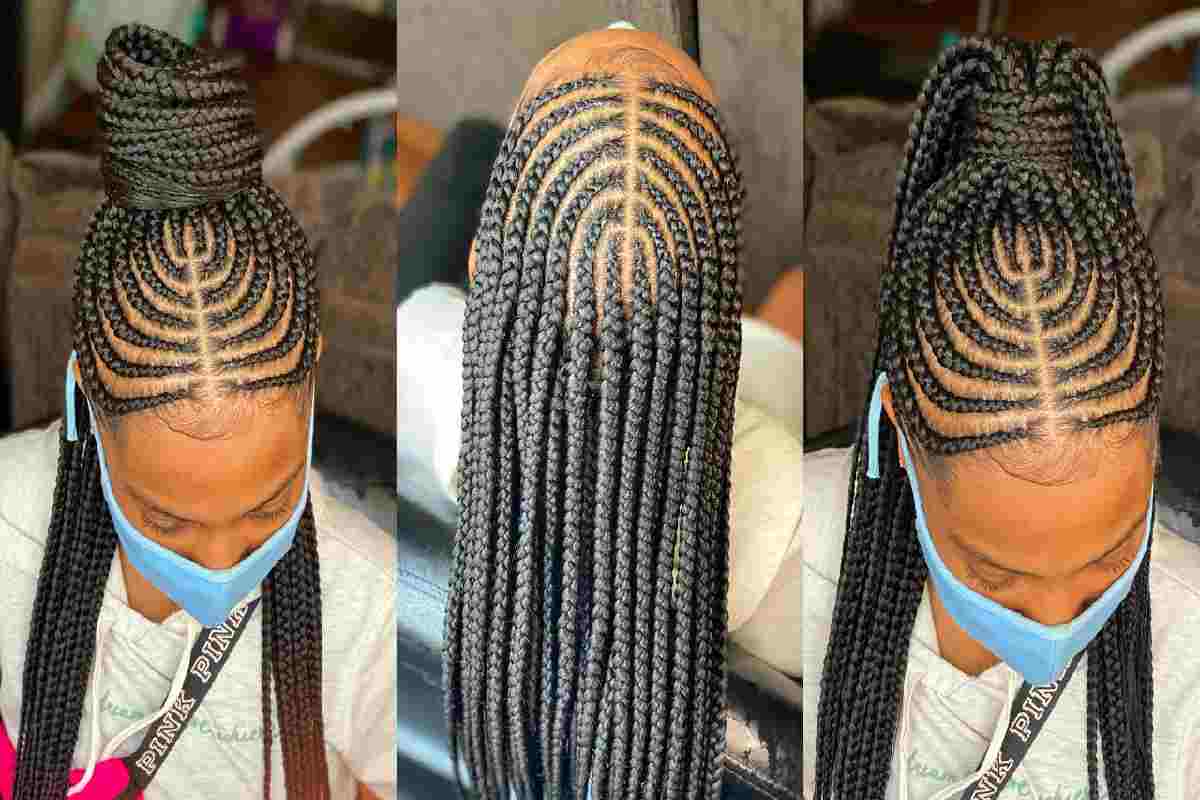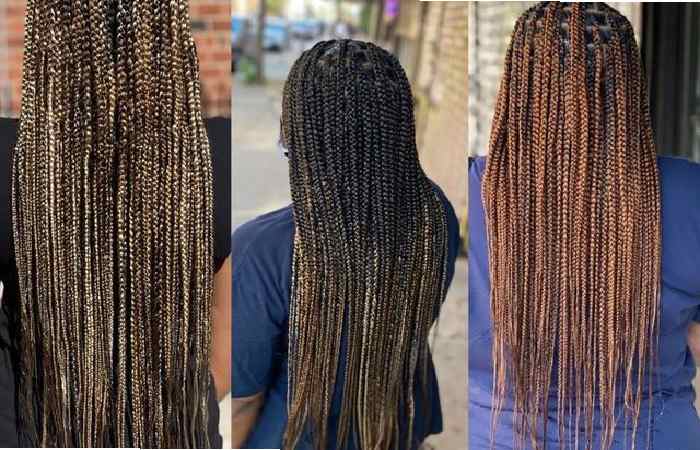
Feed In Braids to the Back: Timeless Style Type of Hair Care. A Stylish and Protective Hairstyle Braiding the hair and feeding it to the back started growing in popularity recently; protective styling is highly stylish. This technique requires weaving natural hair with extensions, hence giving one a natural look needed for quite some time while at the same time protecting the hair as one styles it up in various ways. In this article, we will look at what feed-in braids to the back are, if they suit your hair, how they completes, and how to keep them stunning.
What Are Feed In Braids to the Back?
Feed in braids to the back are another form of protective hairstyle that pulls through the ladies’ hair and starts braiding from the front head to the back while integrating the hair extensions to blend naturally with the hair pulled as it is braid. This technique is different from other braiding techniques in that it begins with a small section of the hair on the head starting at the scalp and gradually incorporates more hair and extensions, and the braid continues.
The result is that a seamless blend is makes from the scalp, transitioning up the length of the braid, no longer creating a bulky look or appearance generally accessory with traditional braid extensions. Braids fed to the back of the head style for straight back, like cornrows, or even with many designs begin to them, making ideal for people who need easy-to-maintain hairstyles but with class.
Benefits of Feed In Braids to the Back

Protection for Natural Hair
The feed in braids. They prefer to complete to the back as they help prevent the hair from discover to several elements, such as heat, humidity, and pollution, that may lead to hair damage. This protection can mean less breakage and better hair health. In general, it should be noted that textured hair is naturally curlier and coarser than most hair types.
Low Maintenance Feed In Braids to the Back
Feeding the hair braids on the back is also a recommended hairstyle for those who want to avoid constant hairstyle touch-ups. Once applied, these braids may last for weeks, depending on the hair type, thus minimizing the hair manipulation regularly. It’s most advantageous for those with a tight schedule or wanting to take time off from manipulating their hair.
Versatility in Styling
Even though this is a protective style, feed-in braids to the back allow for a lot of variation regarding the styling. They can be brushed until weak, plaited, put into a pony or a bun, or decorated with items such as beads or cuffs. Such flexibility lets clothes wearers change their appearance without worrying about the braids’ quality.
Promotes Hair Growth
If the hair is not manipulated incorrectly and protected from damage, then feed-in braids to the back may be used to promote an environment that can favor hair growth. In this protective style, most people can record more length retention and, most importantly, their general hair growth.
The Process of Creating Feed In Braids to the Back
Preparation
However, no matter what type of braid you will create, there are a few things you need to do before you start braiding. It may include such procedures as washing, conditioning, and proper combing out of the hair. It is also common for some stylists to infuse the hair with a leave-in conditioner or light oil to help the hair retain moisture when braiding.
Sectioning the Hair Feed In Braids to the Back
The following process entails properly parting hair to produce the desired design. Depending on Its preferred style, these could be simple straight-back sections or more elaborate designs. The two methods are then applied to each section as sections are divided into subsections where the supposedly braid will occur.
Starting the Braid
The feed-in technique starts with sectioning a strand of natural hair next to the scalp. They explain the braid moves along the head, strands of the extension hair are add individually, making it hard to see where the extension hair ends and the natural hair starts.
Incorporating Extensions
More extension hair is added in small stapes into the braid as the braid extends further. It is this gradual buildup of hair that ensures minimal bulk that those traditional braiding methods employing extensions give while simultaneously creating a more natural look.
Securing the Ends
After reaching the knowing length, the braids’ ends are lock using hot water or a few drops of hair gel to avoid untying. Some stylists include small rubber bands for extra measure.
Maintaining Feed In Braids to the Back
Nighttime Care
It is to ensure that the feed-in braids to the back do not get ruined, especially at the tail, and to maintain the neat and lasting feed-in braids. It achieves using a satin, silk bonnet, or scarf while sleeping. One can also use a satin pillowcase. They also include a thickness that assists in minimizing hormones of contact or friction, which helps to hinder frizz.
Moisturizing Feed In Braids to the Back
Moisturizing is essential so as not to cause any harm to the hair and the scalp. We then feed and braid the hair at the back. A leave-in conditioner or a braid spray is perfect for the hair and scalp as this is free from actual product buildup and would help minimize the chances of an itchy scalp and dry hair.
Cleansing
Though feed-in braids to the back are a protective style, one must wash the scalp occasionally. It implement with a mild shampoo or wet witch hazel, a soft cloth, a cotton swab, or a brush.
Touch-Ups
It essential for the style to appear new, thereby requiring some parts to be reactive around the edges and nape of the neck. It takes form in re-braiding small sectors and applying edge control products to arrest flight.
Conclusion
Braiding it in feeds right into the back area gives an attractive, convenient, and healthier hairstyle for individuals seeking to exercise some breaks without compromising the look of their hair. Considering the trichological advantages of hair protection, low maintenance, and freestyling possibilities, this technique has become popular with many hair enthusiasts.
Feed-in braids to the back will be the perfect answer if you need growth, reduce the daily manipulating time, or want to try a new style. If done correctly, this style of hair can make your hair healthier and more robust. At the same time, you will have a variety of styles to choose from. Like with any protective style, it is best to go to a professional stylist to avoid damaging natural hair and get the best outcome possible.